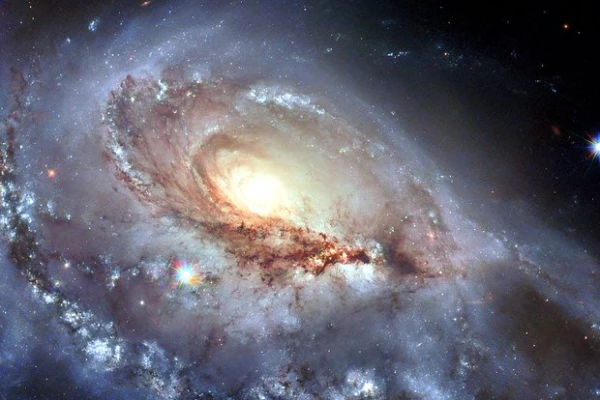
The new hypothesis is called the "GlymphoVasomotor Field Theory."
According to a new hypothesis, consciousness arises not only from the activity of neurons but also due to physical processes — electromagnetic fields generated by the movement of fluids in the brain. This model, like its predecessors, remains theoretical for now but offers an unconventional perspective on the problem of synchronizing the work of different parts of the brain.
The origin of consciousness — the subjective experience, thoughts, and sensations — remains one of the main mysteries of science. Decades of research have not led to the emergence of a theory that could fully encompass this phenomenon. Common concepts offer different, sometimes contradictory explanations and face difficulties in experimental verification.
One of the leading theories, the theory of integrated information, suggests that consciousness is a property of any system capable of complexly integrating information. According to it, the epicenter of consciousness is located in the so-called hot zone in the posterior parts of the cerebral cortex. Recent large-scale experiments to test the theory have failed to confirm its key prediction of continuous synchronization of activity in this zone during conscious perception.
Another influential approach — the global neuronal workspace theory — compares consciousness to a stage where only the most important information appears. When information reaches neural networks in the frontal and parietal lobes, it becomes "globally available" to the entire brain — and at that moment, it is consciously recognized. This theory has also encountered contradictions. Experiments have shown that the powerful "burst" of activity in the frontal lobes at the moment of awareness predicted by it is far from being as universal as assumed.
Against this backdrop of difficulties, medical student Shalin Bhatt, along with colleagues from Georgetown University (USA), proposed an alternative view. The scientific work is published in the journal Medical Hypotheses, which specializes in examining new and speculative ideas.
The new hypothesis is called the "GlymphoVasomotor Field Theory." It shifts the focus from pure neurobiology to biophysics and is based on the work of the glymphatic system — a network of channels around blood vessels through which cerebrospinal fluid (CSF) moves in the brain, performing a cleansing function.
The authors of the idea constructed the following chain of events. Rhythmic releases of norepinephrine from a region in the brainstem called the "locus coeruleus" cause the walls of blood vessels to rhythmically pulse. This pulsation, in turn, drives the CSF. Since it contains charged particles — ions — their accelerated movement, according to the laws of electrodynamics, creates a weak but structured electromagnetic field.
This field, according to the authors of the study, plays the role of an invisible framework or "conductor" for neurons. If we imagine neurons as musicians in an orchestra, each performing its part, the glympho-vasomotor field sets the overall rhythm, uniting their disparate activity into a single and harmonious "symphony" of consciousness. This approach allows for an explanation of how distant parts of the brain — for example, the posterior and anterior — can work synchronously even without direct neural connections between them. They are coordinated by a common physical field.
As indirect evidence, the scientists cited the effect of certain medications. For example, the sleeping pill zolpidem, which alters consciousness, also suppresses the pulsation of blood vessels and the flow of CSF. At the same time, in some patients with severe consciousness disorders, zolpidem paradoxically causes "awakening." The GlymphoVasomotor Field Theory offers a possible explanation for this, linking changes in consciousness with the modulation of vascular dynamics and fluid flows.
However, this hypothesis raises serious questions. The key one is whether these proposed electromagnetic fields are strong enough to have a significant impact on the activity of billions of neurons. Current understandings of the biophysics of the brain suggest that such fields should be vanishingly small.
Another fundamental aspect is the issue of correlation and causation. The observed correlation between changes in blood flow and states of consciousness does not prove that the former causes the latter. Both phenomena, for example, could be the result of another neural process that the hypothesis does not account for.















Leave a comment